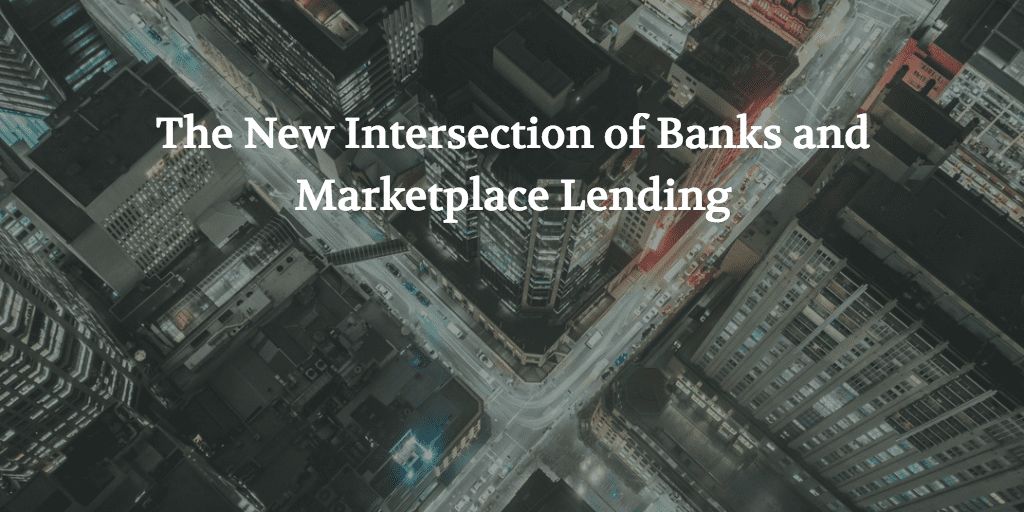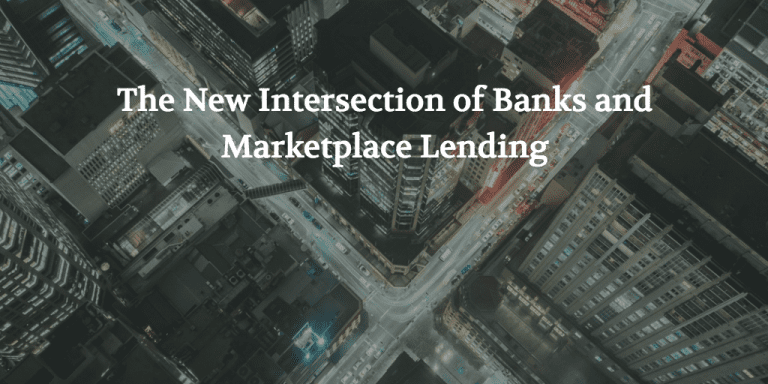 Since Lending Club announced the first bank partnership in 2013 banks have been increasing their involvement in the marketplace lending industry. But in recent months it feels like banks have become even more integral to our industry. Platforms are now actively contemplating acquiring a bank or starting their own bank. Many think this marks the end of the disruptive nature of marketplace lending. I couldn’t disagree more.
Since Lending Club announced the first bank partnership in 2013 banks have been increasing their involvement in the marketplace lending industry. But in recent months it feels like banks have become even more integral to our industry. Platforms are now actively contemplating acquiring a bank or starting their own bank. Many think this marks the end of the disruptive nature of marketplace lending. I couldn’t disagree more.
Zopa is Leading the Way Again
Zopa began the peer to peer lending revolution when it launched in 2005 and they are leading the way again with their announcement last month that they will be launching a digital bank. Their application has to go through a lengthy regulatory approval process that could take as long as two years but once approved they will be able to take deposits and offer a full suite of banking services.
The digital bank will remain separate from their P2P lending platform but clearly there will be some cross selling to Zopa’s clients. Zopa investors may decide to open a savings account or take out a small business loan, services that Zopa could add once they launch their digital bank.
SoFi is the Company to Watch in the USA
SoFi has a very different business model to Zopa. They were never a peer to peer lender but have operated a hybrid marketplace/balance sheet lending model. They are, however, the clear leader in online lending today in the US. They currently offer multiple products: student loans, personal loans, residential mortgages as well as wealth management services and recently began offering insurance. This suite of products looks similar to what many bank holding companies offer.
What is interesting about SoFi is that they have been decidedly anti-bank almost from day one. CEO Mike Cagney has been critical of banks in the press and they ran a series of television ads a year ago with that same anti-bank message. But this year they have changed their tune somewhat. While still critical of traditional banks they are now openly talking about obtaining a banking license.
In July the Wall Street Journal reported that SoFi met with regulators in Utah about obtaining a bank charter there although nothing has come of it yet. And just this week Cagney told Inc. Magazine that “we feel very confident that in 2017 you’ll be able to have a SoFi bank account … with a debit and/or credit card.” While there was no mention of how they will achieve that clearly some kind of banking license is the way forward for SoFi.
The OCC Fintech Charter
The Office of the Comptroller of the Currency (OCC) regulates national banks and they recently proposed a new Fintech charter. This is being designed for online lending platforms and other Fintech verticals that would benefit from some kind of national regulatory framework. Right now companies like SoFi and Lending Club have to register as lenders in every state, although in the case of Lending Club this has been made easier with their partnership with WebBank, an FDIC-insured industrial bank in Utah.
Many platforms I have spoken with in the past couple of weeks are interested in this Fintech charter but we are all waiting to see the details. When it becomes a reality this will further blur the lines between banks and marketplace lending platforms.
Digital Banks Becoming More Prevalent
Everyone has been watching the new platform called Marcus which was launched by Goldman Sachs earlier this year. The consumer lending platform is competing directly against the likes of Lending Club, Prosper, SoFi and Marlette. But as part of a bank Marcus can use bank deposits to fund these loans not outside investor money that is the primary source of funding for the aforementioned platforms. And like these platforms GS Bank has no physical branches, it is a digital bank.
Of course, digital banks have been around since the 1990s and all banks today have some form of digital component to their banking operation. Wells Fargo launched their own online lending platform called Fastflex back in May. We have written extensively about partnerships between banks and online lending platforms and we expect many more of these partnerships to be announced in the coming year.
Digital-only banks are still relatively few in number but it is the fastest growing part of the banking industry. Ally Bank is an online-only bank that emerged during the financial crisis from the ashes of the old GMAC Bank. CapitalOne bought ING Direct and that entity is now known as Capital One 360. There is also Moven which is not actually a bank but provides a mobile-first banking experience. Simple launched in 2009 as a way to reimagine the banking experience and they are now part of BBVA.
In the huge Chinese market several leading Fintech companies are launching digital banks after the regulator granted new banking licenses to six institutions in 2014. WeBank, the digital bank of internet giant Tencent (the creator of WeChat) launched in 2015 along with MYbank, the digital bank of Ant Financial (part of Alibaba).
What is the Core of Marketplace Lending?
So, let’s go back to the original question about the future of marketplace lending. If SoFi or Lending Club becomes a bank does that mean their original premise to disrupt banking never came to pass? I have read many articles in the past week that talk about Zopa selling out and abandoning their roots.
As I have said many times all lending is moving online. The pioneers in this area have been the early marketplace lending platforms. Would Marcus exist without Lending Club and Prosper? I highly doubt it. These platforms have demonstrated a more efficient way to do lending and the banks have taken notice. The disruption will continue but it will happen at both banks and marketplace lending platforms.
When I started investing in Lending Club in 2009 it was truly a peer to peer lending operation. Since then the industry has changed and is now dominated by institutional investors. And that has always been ok with me. I invest because I like not just the high yields, but more importantly the diversification I get by adding consumer credit and small business credit to my investment portfolio. These are asset classes that are not easily accessible elsewhere.
I think it is inevitable that the lines will continue to blur between banks and marketplace lending platforms. For these platforms to grow to a truly large scale they are going to have to think and act like banks. This is already happening so I see it as a natural evolution that many of these platforms will become banks.
As for the investing side of the business we will never get mass adoption by relying on individual investors opening up accounts one by one at marketplace lending platforms. The way most investors will access this asset class in the future will be through a managed fund. We saw the first 40-Act funds launch this year and they will be the first of many.
So, as an investor, in the future most people will access consumer and small business credit, or real estate for that matter, through a fund that invests in a range of platforms, some of which are banks. And I don’t see how that can be a bad thing.
I am happy for you to disagree with me so please let me know your thoughts in the comments below.


